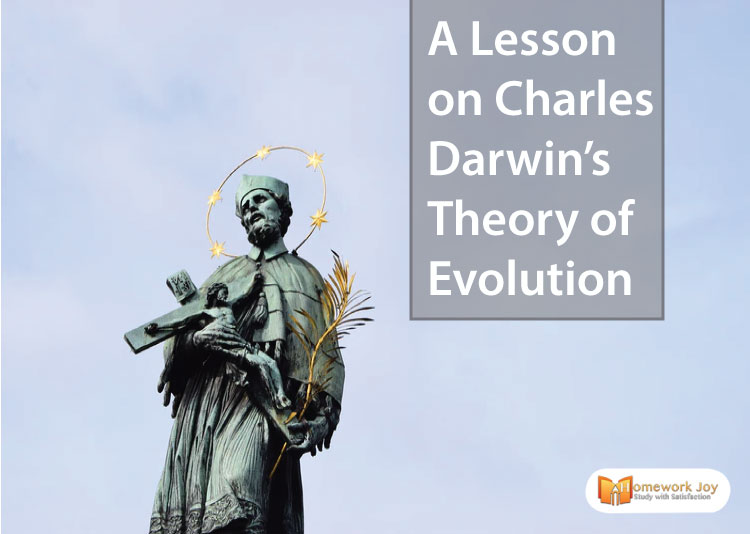Being a science student isn’t easy; students often face new terms in their daily lives. Thus through the medium of Homework Joy, we try to help students, not only in science but in different subjects. When the world is evolving day by day, it is essential to understand this process of evolution. So today, we’ll discuss Charles Darwin’s Theory of Evolution – the basic theory given by scientists to understand evolution.
An English Naturalist Charles Darwin uses his skills to develop a theory that describes the process of evolution. Though it is a remarkable theory that applies to all organic species, some controversies surround it when applied to humans. So in this guide, we’ll discuss everything about Darwin’s theory of evolution in-depth. Let’s get started.
Also, look at some of our posts that might help you in writing assignments.
A Guide to Write Personal SWOT Analysis Assignment
How to Write a Reflection Paper in 6 Easy Steps
Before starting our today’s lesson on Darwin’s theory of evolution, let’s see what we are going to discuss in this guide.
- What Does Evolution Means?
- What is Charles Darwin’s Theory of Evolution?
- Four Main Principles of Darwin’s Theory of Evolution
Since we are talking about Darwin’s theory, which is based on evolution, first, we should know what is evolution exactly.
What Does Evolution Means?
Evolution is the transformation in the traits of species over serval years. It relies on the process of natural selection. So the basic idea behind evolution is that all species are related to each other and gradually change over time.
Furthermore, evolution depends on genetic variation in a population which affects the physical features of an organism. Some of these characteristics are beneficial for individuals as they can pass of them to their offsprings.
After understanding evolution now, its time to see what is Darwin’s theory of evolution.
What is Darwin’s Theory of Evolution?
Darwin’s theory of evolution is also referred to as Darwinism. When an English naturalist Charles Darwin developed a biological evolution, it is named as Darwin’s theory of evolution. It states,” all species of organisms arise and develop through natural selection of small variation that increases through individual abilities.” also, darwin’s theory of evolution includes broad concepts of transmutation of species or natural selection.
Now you must be thinking about what are the terms “natural selections” and “transmutation of species.” So don’t worry, let’s understand these terms one by one.
Darwin’s Theory of Natural Selection
According to Darwins’ theory of evolution, evolution happens only because of natural selection. Indeed, different individuals in a species have various physical features.
For instance, the natural variations that you see in different individuals are only due to differences in their genes.
Moreover, individuals have different characteristics that help them to survive in their native environment. For example, finding food, avoiding predators, and resisting disease. So these individuals pass on their traits or genes to offsprings through reproduction. Besides this, individuals who can’t survive in their surrounding environment won’t be able to pass on their genes to the next generation.
How are Genes Related to Darwinism?
The concept of evolution operates at the genomic level. Changes in the DNA are responsible for the composition and expression of our genes. Thus it means to understand the evolution of different species; first, we have to follow the DNA sequences in the genes.
The below-mentioned are some interesting facts about the relation of genes and Darwin’s theory of evolution.
- The human genome looks like this because of the genetic changes that affected our ancestors.
- If you see two people, look-alike, it might be evidence of them sharing the same ancestors.
- Do you know? Humans and fruit fly share much of their DNA. That is why 75% of genes that cause diseases in humans can be seen in the fruit fly.
- As DNA accumulates and changes over time, some of these can provide a selective advantage to the organisms.
- When a change in the environment makes challenges, the species divide into several new forms.
Thus that is how different species evolve according to Darwin’s theory of evolution. Now let’s move ahead to see what are the four principles of evolutionary theory.
Four Main Principles of Darwin’s Theory of Evolution
The four principles of Darwinism are like its four pillars. So let’s understand them one by one.
Variations in Populations
There is a variation in every species. That is why we often see differences between siblings like height weight, color, structure, and so on. Also, there are places where we can see many variations like Madagascar, Australia, and so forth. There can be two reasons to explain this variation. First, they might belong to different parts of the world. Second, these individuals have evolved due to particular conditions.
Inherited Traits
Each species has interesting traits which they pass on to their offsprings. Also, it is only these inherited traits that improve the odds of survival. But traits that developed through environmental influences may not pass on to the next generation. Only traits passed by genes reach to the next generation.
Competition of Offsprings
Most species produce offsprings each year more than the capacity of the environment. Thus offsprings have to compete among the species for the limited natural resources. This competition defines the mortality rate in a species.
Only Fittest Survive
Some individuals survive the struggle of resources mentioned above. Only these individuals reproduce and pass on their genes to the next generation. This process is natural selection that we mentioned-above.
Thus, it was a brief explanation of Darwin’s theory of evolution. We hope this chapter will help you in learn evolution. If you still have doubts about the topic or need more biology assignment help, you can hire top-notch experts or have one to one chat. Thus get instant help and learn well.
